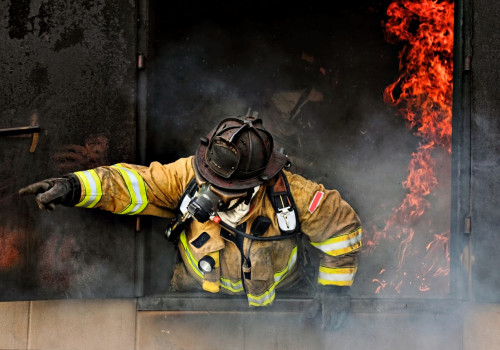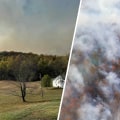As an expert in fire services in Northern Virginia, I have witnessed the devastating effects of large-scale emergencies firsthand. From wildfires to building fires, these emergencies can quickly escalate and cause significant damage to property and even loss of life. That's why it is crucial to have a well-defined protocol in place for responding to these emergencies.
The Importance of a Protocol
Before we delve into the specifics of the protocol for responding to a large-scale emergency in Northern Virginia, let's first understand why having a protocol is essential. A protocol is a set of guidelines and procedures that are put in place to ensure a coordinated and efficient response to an emergency.It helps emergency responders know what steps to take, who to contact, and how to communicate with each other during a crisis. Without a protocol, chaos can ensue, and valuable time can be lost trying to figure out what needs to be done. In an emergency situation, every second counts, and having a well-defined protocol can make all the difference in saving lives and minimizing damage.
The Protocol for Responding to Large-Scale Emergencies in Northern Virginia
Now let's take a closer look at the protocol for responding to large-scale emergencies in Northern Virginia. This protocol is based on the guidelines set by the Northern Virginia Fire Chiefs Committee and is followed by all fire services in the region.Step 1: Initial Response
The first step in responding to a large-scale emergency is the initial response. This involves receiving the emergency call and dispatching the appropriate resources to the scene.In Northern Virginia, this is typically done through the 911 system, which connects callers with the nearest emergency dispatch center. Once the call is received, the dispatcher will gather information about the emergency, including the location, type of emergency, and any other relevant details. They will then dispatch the appropriate fire services to the scene.
Step 2: Size-Up
Upon arrival at the scene, the first responders will conduct a size-up. This involves assessing the situation and determining the scope of the emergency. They will look for any potential hazards, such as downed power lines or hazardous materials, and gather information about the building or area affected by the emergency. The size-up is crucial as it helps determine the resources needed to respond to the emergency effectively.It also helps identify any potential risks to the responders and allows them to develop a plan of action.
Step 3: Establish Command
Once the size-up is complete, the next step is to establish command. This involves designating a commander who will be in charge of coordinating all response efforts. The commander will be responsible for making critical decisions and communicating with all responders on the scene. In Northern Virginia, fire services follow the Incident Command System (ICS), which is a standardized approach to managing emergency incidents. This system ensures that all responders are on the same page and working together towards a common goal.Step 4: Rescue and Evacuation
If there are any individuals in danger or trapped in the affected area, rescue and evacuation efforts will begin immediately.Fire services in Northern Virginia have highly trained personnel who are equipped to handle various rescue scenarios, including high-rise building rescues and swift water rescues. In addition to rescuing individuals, fire services will also work on evacuating nearby buildings or areas that may be at risk due to the emergency. This is done to ensure the safety of the public and prevent the emergency from spreading.
Step 5: Containment and Suppression
Once all individuals have been rescued and evacuated, the focus shifts to containing and suppressing the emergency. This involves using various techniques and equipment to control the fire or other hazards and prevent them from spreading further. In Northern Virginia, fire services have access to state-of-the-art equipment, including fire trucks, hoses, and specialized tools, to help them contain and suppress emergencies quickly and efficiently.Step 6: Recovery and Investigation
After the emergency has been contained and suppressed, the next step is recovery and investigation. This involves assessing the damage caused by the emergency and determining the cause.Fire services will also work on restoring any affected areas to their pre-emergency state. The investigation is crucial as it helps determine if there are any lessons to be learned or improvements that can be made to prevent similar emergencies in the future.










